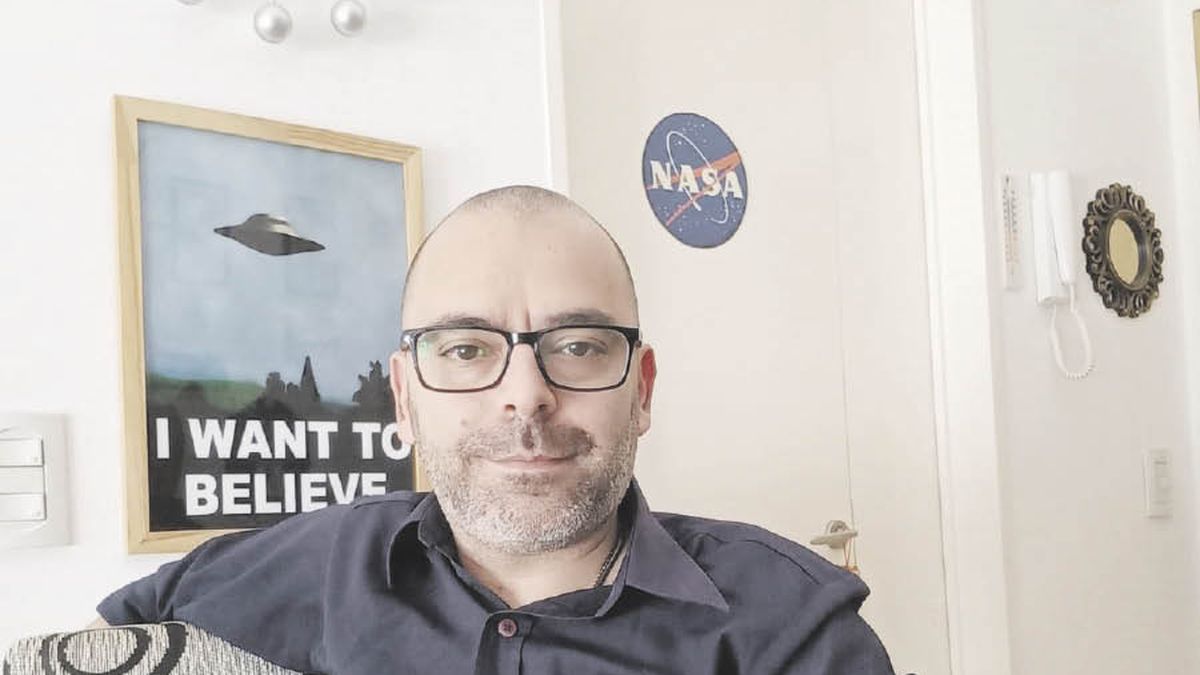Gastón Intelisano: That which is seen in series like CSI I have not seen anywhere. And I have been professionally enough in the world. Very few series portray the work of forensics as such. The resolution of a crime is not so simple. Studies are not that fast. There is no appliance that is often shown in the series. That is the negative effect of those series. They imagined that solving a crime is finding a bloodstain and it is not so, so easy. There is a first stage in which the forensics intervene, then there is the trial stage where we have what was done and worked well, but there are lawyers who are dedicated to finding the hair to the egg to throw down an expertise, and everything the case. That means that there are many cases that are not resolved. Sometimes it happens that when an autopsy is finished, the cause of death is not found, there is not a stab, a bullet hole, a blow, and it ends up solving when it is sent to Pathology and they find something at the microscopic or cellular level of the cause of death. When I was a student, I did many years of internships at “the scene of the event”. He went out with the criminal motive of the Federal Police. And the federal forces are really very well prepared and equipped.
Q .: Is it true that your profession entered the top ten of university studies?
G.I.: The people who chose to study criminology grew, and in Medicine those who specialized in forensic and legal medicine. I started in 2000 and I belong to the first generation of civilian students, when it was again a career not only for security forces. We received ten from criminalistics graduates. When the CSI series was at its peak, sixty students entered the race. It was a quantum leap.
P .: Given the scientific nature of the work, they cannot stop studying because the update is constant.
G.I.: Crime is changing, mutating, there are new techniques. Criminalistics has a lot of hard science. I had mathematical, physical, chemical analysis. To get to the specific matters, you have to overcome those filters that can later be key to explain why the car braked like this, why the blood stain shot out like that and caused that angle, why you have to analyze the DNA found. From 2000 to now, the development of technology helped a lot in the investigations, but it also complicated them. Today, in any event, cell phones, tablets, notebooks must be seized not only from the victim, but also from relatives, suspects and accused. Today security cameras are of great help, they are the registration of a lot of eyes. But technology at the same time that it has helped has complicated the investigation of the crime. An example, the work of those who dedicate to the analysis of digital evidence grew exponentially in the last decade.
Q .: It has been said that “there is no perfect crime, there are bad investigations.”
G.I.: That is why it is so essential that forensic work is done well at the scene. What was not recorded correctly is lost and there is no going back. There is evidence that if not taken in that first moment can lead to the crime not being clarified. When the scientific sector enters the scene, and should be the first to enter, they are dressed in white overalls, a special outfit that covers them so that the principle of exchange is not fulfilled, which is that one takes something from the place or one transmits something to the place. The same occurs in the case of autopsies where the investigator is exposed to liquids, gases, splashes, contagions, and it is essential to protect himself.
P .: With the increase in insecurity, did forensic work grow?
G.I.: Unfortunately, yes, because many victims are people killed in robbery. It had dropped in the first moments of the pandemic because no one came out. As the exits began to become more flexible, the movement of the people, insecurity and autopsies began again. We intervene in all those that are violent acts, homicides, suicides, femicides, traffic accidents and investigation of causes of death, which is when a dead person is found and, although he does not have a blow or anything, on suspicion of criminality the prosecutor asks for an autopsy. Later it can be discovered that it was a natural death but until that moment it was considered a death of doubtful criminality.
Q .: Did you come to criminology through detective novels or do you write police because of the experience that your profession gives you?
G.I.: As a child I was marked by series and movies such as the FBI, The X-Files, The Silence of the Innocents and The Bone Collector. I saw her just the day I enrolled in Criminalistics and I told myself this is what I want to do. In novels I am a huge fan of Patricia Cornwell and her protagonist, the coroner Kay Scarpetta. The things that she tells in her novels, I was seeing them in my practices in the Federal Police. I told myself this that I am seeing, I have to tell it from my point of view, from my perspective, from here. This is how Santiago Soler emerged, who is the protagonist of my five novels so far: Modus operandi, Miscalculation, Epicrisis, Principle of exchange, Ockham’s razor, exits from the research kitchen.
Q .: What are you writing now?
G.I.: The sixth installment of Santiago Soler’s series that is going to have a kind of tribute to the X-Files, is going to be a policeman but with a dark background, with the manifestation of Evil. A nod to the teacher Stephen King.
Source From: Ambito
David William is a talented author who has made a name for himself in the world of writing. He is a professional author who writes on a wide range of topics, from general interest to opinion news. David is currently working as a writer at 24 hours worlds where he brings his unique perspective and in-depth research to his articles, making them both informative and engaging.




